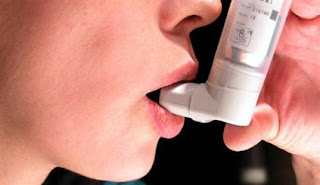Impaired Gas Exchange related to Asthma

Nursing Care Plan for Asthma Impaired Gas Exchange : Excess or deficit in oxygenation and/or carbon dioxide elimination at the alveolar-capillary membrane Defining Characteristics: Visual disturbances; decreased carbon dioxide; dyspnea; abnormal arterial blood gases; hypoxia; irritability; somnolence; restlessness; hypercapnia; tachycardia; cyanosis (in neonates only); abnormal skin color (pale, dusky); hypoxemia; hypercarbia; headache on awakening; abnormal rate, rhythm, depth of breathing; diaphoresis; abnormal arterial pH; nasal flaring Asthma is a chronic, or life long, disease that can be serious—even life threatening. There is no cure for asthma. The good news is that it can be managed so you can live a normal, healthy life. Asthma is a lung disease that makes it harder to move air in and out of your lungs. There are three things that you should know about asthma: Asthma is chronic. In other words, you live with it every day. It can be serious – even life threatening. There is ...